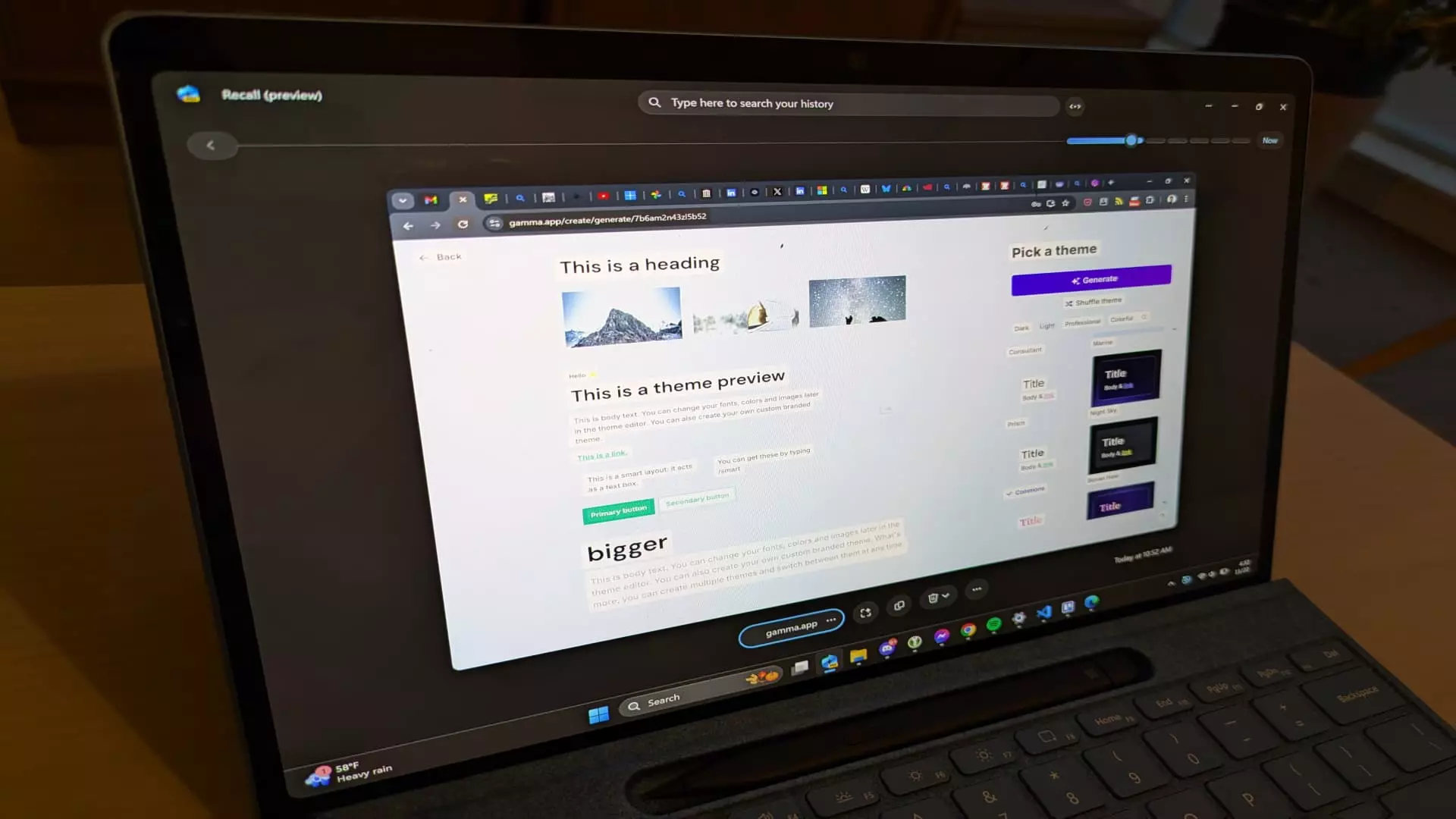With the introduction of Recall, Microsoft aims to revolutionize the way users interact with their digital environments. This feature, initially announced in May, is a part of Microsoft’s ongoing enhancement of its Copilot+ PCs, designed for users seeking a more intuitive and efficient computing experience. However, while the concept of a photographic memory search tool is enticing, the initial rollout raises questions about its practicality and reliability.
The Concept of Recall
At its core, Recall is a feature that promises to capture and store screenshots automatically as users navigate their computers. With the ability to later retrieve information using keywords, Microsoft’s ambition is to create a seamless connection between different digital experiences. This feature is particularly aimed at users utilizing cutting-edge hardware, such as the latest Surface Pro devices running on Windows 11, and is compatible with specific processors like Qualcomm Snapdragon chips.
Despite the promising nature of Recall, its deployment has been tempered by feedback from cybersecurity experts. Concerns around data security led Microsoft to enhance the feature by implementing encryption to protect the captured data and ensuring that it is off by default. These steps highlight the balance that tech firms must strike between innovative features and protecting user privacy, a theme that resonates widely in today’s technological landscape.
The rollout of Recall has not been without challenges. Early adopters have noted several shortcomings that hinder the overall user experience. For instance, while users might expect continuous recording, the system often introduces delays of several minutes between screenshots, resulting in fragmented timelines. This limitation can be particularly frustrating for those who rely on the tool’s ability to capture a comprehensive digital history.
Moreover, the feature struggles with accuracy in its search functionality. In tests, users reported discrepancies when attempting to locate images based on specific keywords. For instance, when the term “Yankees” was entered, results were inconsistent; only one of two relevant images appeared. This inconsistency raises significant doubts about Recall’s reliability as a research aid or memory tool. Furthermore, as seen with searches for locational objects like street signs or stoplights, Recall failed to retrieve relevant images based on descriptive searches, hampering its effectiveness.
Another critical aspect of the Recall rollout is its limited compatibility with certain applications and accessibility programs. The feature promises to allow users to blacklist specific apps from being recorded, but reports indicate that not all installed applications are recognized by this list. This inconsistency can lead to unexpected captures, further complicating the user experience.
Additionally, the process of navigating through captured screenshots can be clunky and time-consuming. Unlike the instantaneous returns one might expect from a modern search function, users have reported delays in loading images, leading to a frustrating experience when sifting through their digital memories. Given that speed and efficiency are paramount in a search tool, these delays could potentially diminish user satisfaction.
Despite its shortcomings, Recall is not without merit. When functioning correctly, it offers a unique and fascinating way to revisit moments and information, effectively bridging gaps between past and present digital interactions. The ability to click through to the original content captured in a screenshot presents a compelling value proposition, allowing users to resume their previous activities with ease.
As Microsoft continues to develop Recall, addressing the current technical issues and refining the user experience will be crucial. Gathering feedback from the active user base can help pinpoint weaknesses and inform necessary adjustments. With the right enhancements, Recall has the potential to become an indispensable tool for productivity, but it needs to first conquer its early hurdles to earn user trust and reliance.
While Microsoft’s Recall feature represents an exciting venture into AI-assisted digital memory, it faces various challenges that must be resolved for it to fulfill its promise. The landscape of technology demands tools that not only introduce innovation but also operate with impeccable accuracy and user satisfaction. As Microsoft navigates these waters, the future of Recall remains a work in progress, with the potential to evolve into something truly notable in the realm of personal computing.


Leave a Reply